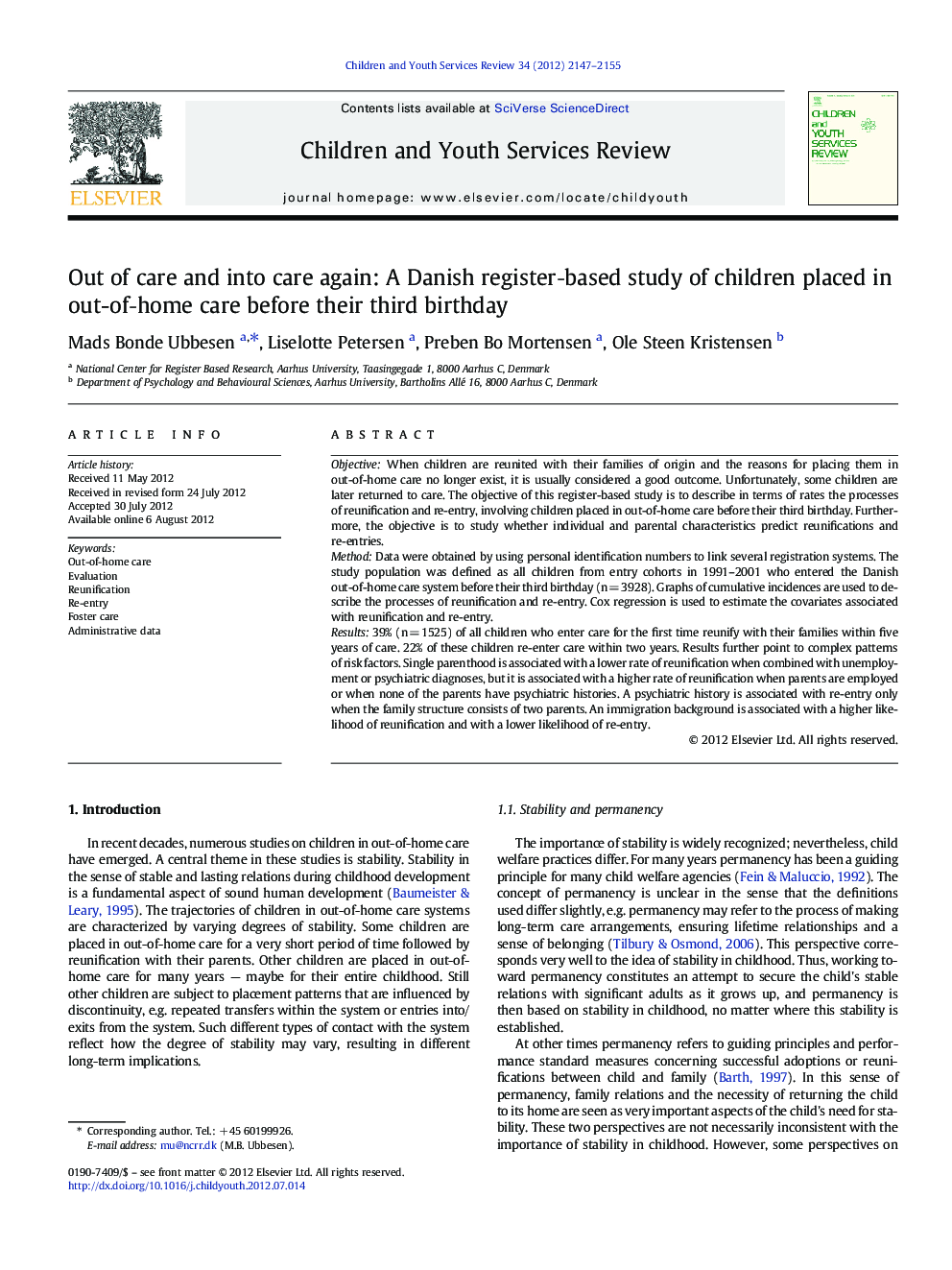| Article ID | Journal | Published Year | Pages | File Type |
|---|---|---|---|---|
| 346652 | Children and Youth Services Review | 2012 | 9 Pages |
ObjectiveWhen children are reunited with their families of origin and the reasons for placing them in out-of-home care no longer exist, it is usually considered a good outcome. Unfortunately, some children are later returned to care. The objective of this register-based study is to describe in terms of rates the processes of reunification and re-entry, involving children placed in out-of-home care before their third birthday. Furthermore, the objective is to study whether individual and parental characteristics predict reunifications and re-entries.MethodData were obtained by using personal identification numbers to link several registration systems. The study population was defined as all children from entry cohorts in 1991–2001 who entered the Danish out-of-home care system before their third birthday (n = 3928). Graphs of cumulative incidences are used to describe the processes of reunification and re-entry. Cox regression is used to estimate the covariates associated with reunification and re-entry.Results39% (n = 1525) of all children who enter care for the first time reunify with their families within five years of care. 22% of these children re-enter care within two years. Results further point to complex patterns of risk factors. Single parenthood is associated with a lower rate of reunification when combined with unemployment or psychiatric diagnoses, but it is associated with a higher rate of reunification when parents are employed or when none of the parents have psychiatric histories. A psychiatric history is associated with re-entry only when the family structure consists of two parents. An immigration background is associated with a higher likelihood of reunification and with a lower likelihood of re-entry.
► Investigation of reunification and re-entry on a national population. ► Use of individual level data describing child's and parents' characteristics. ► Estimation of covariates associated with reunification and re-entry. ► Results reveal complex patterns of movements out of and into the system.
